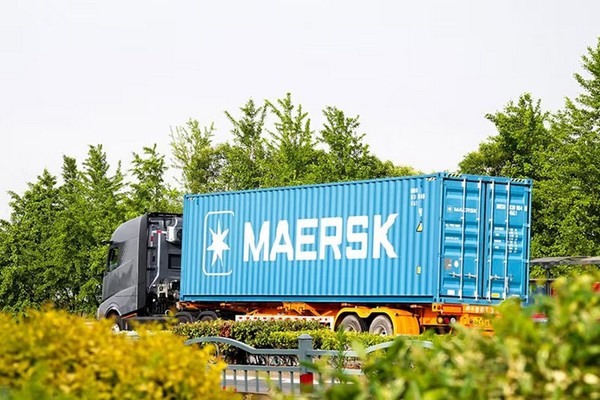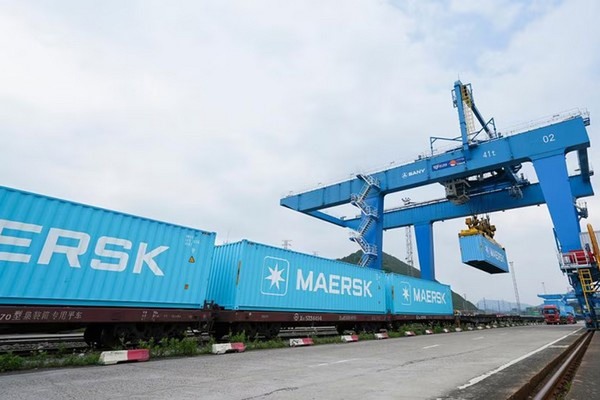North American supply chains continue to experience disruption from tariffs, port congestion, and shifting cargo flows. Some manufacturers advanced orders ahead of tariff announcements, while others adjusted sourcing. Lead logistics strategies are evolving with a focus on data visibility and scenario planning, while predictive tools are increasingly applied to procurement and routing decisions.
 © Maersk
© Maersk
On ocean freight, Europe to North America services remain constrained, with factories limiting activity to contracts. Low water levels are reducing Canadian capacity. From the Indian Subcontinent, the Middle East, and Africa, recent U.S. tariff changes on India have introduced uncertainty, but weekly sailings remain available. Asia-Pacific to North America trade is affected by seasonal factors, with China's Golden Week in October expected to alter schedules. The U.S. has introduced new tariffs, including a 15% rate on EU-origin goods under the July 31 Reciprocal Tariff Executive Order, and expanded duties on India-origin products.
Peru's fruit season is building, with Maersk's CLX service returning to Paita, providing a 13-day transit to Philadelphia to support early-week market availability. Caribbean service adjustments will take effect at the end of September, shifting Veracruz and Altamira calls to UCLA service via Cartagena.
 © Maersk
© Maersk
Less-than-container load activity reflects inventory repositioning after tariff-driven ordering earlier in the year. Some importers are using LCL to manage trial shipments from lower-tariff regions or to spread smaller volumes over time.
Customs procedures in the U.S., Canada, and Mexico are becoming more complex. The U.S. has removed the de minimis exemption for shipments under $800, requiring all goods to be declared. Tariff enforcement on steel, aluminum, and derivative products is stricter, with the reporting of country of origin now required. Section 301 exclusions for some China-origin goods are extended until November 2025. Canada has announced the removal of CUSMA tariffs on U.S. goods, except steel, aluminum, and autos. Mexico has banned imports of finished footwear under IMMEX.
Inland transport in the U.S. is steady, with national dray rates up 4.6% year-on-year. Diesel averages $3.78 per gallon, adding cost pressure. In Canada, congestion persists around Montreal due to construction and low water levels on the St. Lawrence. Newark delays are slowing Canada-bound rail cargo, with reefer trucking remaining tight.
 © Maersk
© Maersk
Warehousing remains stable, though bonded and FTZ facilities are in higher demand for duty management. Strategic warehousing is increasingly tied to inventory planning and sourcing shifts. Ground freight in the U.S. is building ahead of peak season, with early retailer promotions driving volume forward. In Canada, conditions are stabilizing with moderate demand.
E-commerce networks are preparing for peak deliveries with added routing options and capacity planning. Delivery reliability depends on coordinated fulfillment, sortation, and last-mile strategies, with contingency measures in place to manage potential disruptions.
To view the full report, click here.
 For more information:
For more information:
Mikkel Linnet
Maersk
Tel: +45 2482 1196
Email: [email protected]
www.maersk.com
